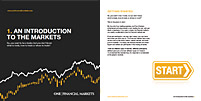

Asia FX weakens amid debt ceiling woes, dollar at two-month high
Investing.com -- Most Asian currencies slid on Thursday, while the dollar hit a two-month high as uncertainty over raising the U.S. debt limit and averting a default saw investors avoid risk-driven assets.
Worsening sentiment towards China also weighed on regional currencies, amid reports that the country faces a resurgence in COVID-19 cases, which could peak by late-June.
The Chinese yuan fell 0.2% to a near six-month low, pushing further below the 7 level after a breach last week. Fears of a renewed COVID outbreak added to concerns over slowing economic growth in the country, after a string of weak readings for April.
Potentially worsening ties between Beijing and Washington also pressured the yuan.
Concerns over China spilled over into broader Asian markets, with the Singapore dollar down 0.2% as data confirmed that the island state’s economy shrank in the first quarter, largely in part due to slowing Chinese demand.
The Australian dollar shed 0.2%, also coming under pressure from its high trade exposure to China, while the South Korean won dropped 0.5%. The won was also pressured by the Bank of Korea holding interest rates steady for a third straight month, with some traders positioning for a possible rate cut later this year.
Broader Asian currencies retreated as fears of a U.S. debt default persisted, with Democrat and Republican lawmakers flagging little progress toward raising the debt limit.
The latest blow to sentiment came from ratings agency Fitch flagging a potential U.S. downgrade in the event of a default.
The Japanese yen sank 0.2% to a six-month low against the dollar, while the Indian rupee fell 0.1% and traded close to a two-month low.
The dollar benefited from increased safe haven demand, while traders also dumped treasuries in favor of the greenback. The dollar index and dollar index futures rose 0.2% each in Asian trade, and were hovering at two-month highs.
Mixed signals on monetary policy also supported the greenback, as the minutes of the Federal Reserve’s May meeting showed that interest rates were likely to remain higher for longer.
Fed Fund futures prices show markets were pricing in an over 60% chance the Fed will hold rates in June. But a growing number of participants are also pricing in the possibility of another rate hike.
Weak risk appetite and high U.S. interest rates pointed to more pressure on Asian currencies in the coming months, continuing a trend seen through 2022.
Begin trading today! Create an account by completing our form
Privacy Notice
At One Financial Markets we are committed to safeguarding your privacy.
Please see our Privacy Policy for details about what information is collected from you and why it is collected. We do not sell your information or use it other than as described in the Policy.
Please note that it is in our legitimate business interest to send you certain marketing emails from time to time. However, if you would prefer not to receive these you can opt-out by ticking the box below.
Alternatively, you can use the unsubscribe link at the bottom of the Demo account confirmation email or any subsequent emails we send.
By completing the form and downloading the platform you agree with the use of your personal information as detailed in the Policy.






